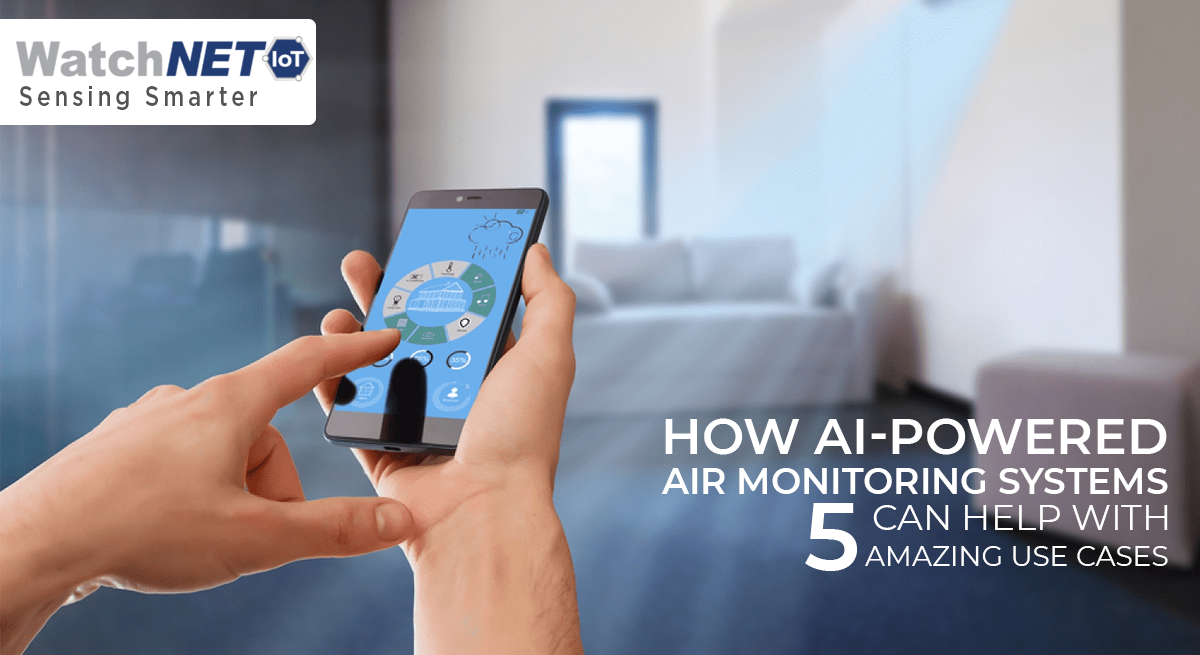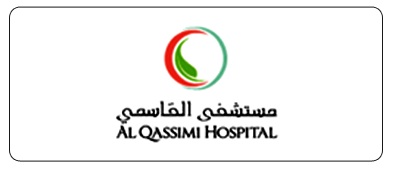
Good quality of air is required to maintain good health conditions among the living environment. Hazardous gases and air pollution can be detected in surrounding areas. Respiratory problems are very common among many people due to air pollution and toxic substance of air. Carbon monoxide, Carbon dioxide, Sulfur dioxide, Nitrogen dioxide, Lead are certain air pollutants commonly known as Criteria pollutants. Microbes, molds, Animal skins, pets, insects are common among the biological pollutants. Air pollution is a major drawback of the current environment and it is a hindrance for public health. Air pollution causes many adverse health effects in human beings, other organisms, for environment, variations in climatic conditions and changes in life cycle of everything. Harmful gases in the air is the reason for all the effects mentioned above by which the entire world suffers a lot.
In past decades, the industrial and technological developments have increased exponentially and accompanied by non-judicial and un-sustainable utilization of non-renewable resources. At the same time, understanding the effect of toxic chemicals on human health has gained significant importance. Environmental toxic agents cause several diseases, particularly high risk among children, pregnant women, geriatrics and clinical patients. Since air pollution affects human health and results in increased morbidity and mortality increased the studies focusing on industrial air pollution absorbed by the common people. Therefore, it is needed to design an AI based Air Pollution Monitoring System.
Effects Of Air Pollution
On behalf of the World Health Organization (WHO) report, the presence of tiny particulates in outdoor air pollution is more dangerous than previously considered. According to the WHO, air pollution kills around 7 million people each year (WHO, 2005). Outdoor air pollution (mostly Particulate Matter) caused 5.2 million early deaths globally in urban and rural regions (WHO, 2018). Deaths from air pollution and related hazards were found to be highest (15%) in South and East Asia. Man-made causes of pollution, such as the use of fossil fuels, deforestation, and transportation emissions, not only create air pollution but also contribute to global climate change.
As a result of climate change, storms, floods, cold spells, and heat waves are expected to have a greater socioeconomic impact. Heat Waves (HWs) are expected to grow increasingly strong and common as a result of man-made climate change. HWs are clearly major events that can induce fast changes in biodiversity patterns as well as ecosystem structure and functioning as a result of human climate change. To overcome the issues, it is very important to forecast air pollution, weather conditions, and climate changes to implement an early-warning system.
How Can Artificial Intelligence Help Monitor Air Toxins
Artificial Intelligence is used to imitate the human mind’s problem-solving and decision-making abilities. To limit public exposure risks due to pollution, AI should be used as an important method for environmental mental pollution forecasting and which helps policymakers to develop better policies in the case of environmental protection. AI can manage complicated and non-linear interactions between spatial-temporal factors, which makes it a better method for air pollution predicting and forecasting, it offers an outstanding capacity for tracking the current pollution condition and demonstrates a precise and quick method for identifying pollution hotspot areas. Deep learning is a subset of the AI method which is also used for forecasting and predicting extreme weather conditions. The important ability of AI is the easy management of a lot of data and real-world complex problems; further, it increases the accuracy in the case of weather forecasting and modelling which helps policymakers and decision-makers.
Artificial intelligence (AI) has recently emerged as the most widely used technology tool for regulating and mitigating the detrimental effects of various air pollutants, generating considerable interest in the disciplines of atmospheric and medical science. Many researchers have utilized AI approaches as a better healthcare decision support device to detect, manage, and cure illnesses caused by air pollution. AI is one such instrument, with tremendous potential to expedite climate change mitigation and adaptation methods in sectors such as energy, land use, and disaster response; however, several bottlenecks and hurdles now exist that prevent AI from reaching its full potential in this area.
Artificial Intelligence that can help analyze Indoor Air Quality
Indoor air quality monitoring is very crucial. Of course, every building with climate control already has some forms of air quality monitoring: it would be difficult to find a building that did not have sensors to determine the air temperature for cooling and heating purposes, as well as the presence of smoke and carbon monoxide for safety. But to determine whether indoor air quality is conducive to human health, monitoring needs to be taken a step farther. AI solutions enable the real-time monitoring of the more complex components of air quality, and can make them easily readable via web dashboards and smartphone applications for businesses, homes, and facilities like schools, childcare centers, hospitals, and airports. A fully integrated AI-driven air quality control system could be programmed to act when unsafe air quality is detected, automatically improving the level of ventilation and air exchange in buildings to reduce the risk of buildup not only of particulates and VOCs, but also of biological aerosols and viral particles. Beyond human health, an AI system able to detect air quality to this extent could also generate energy and cost savings by automatically reducing cooling, heating, humidity control, air exchange, and other quality control measures depending on the number of people present in the building. This type of system would also play a key role in fire prevention, since it could detect CO2 and VOCs, which can signal the presence of fire or increase the chances of one, at even very low levels. Indoor air quality has always been important, but the current pandemic is opening up the possibility of improving it long-term. Thinking ahead, these systems could even have a positive impact on outdoor air quality by reducing our energy consumption and bringing us closer to the goal of “zero energy” buildings. Watchnet Air Quality Monitoring
Artificial Intelligence enabled Cold Storage System
The intake of the perishable fruits and vegetables in the human diet can contribute to reduce the risk of some chronic diseases. But unfortunately, it’s loss rate is high among all the food produced annually and occurs at storage stage of post-harvest life cycle. One of the key factors contributing to this high loss rate is inability to gauge vital ambient environmental parameters in cold storage. The existing monitoring solutions about cold storage are limited to only gauge temperature, relative humidity and ignore other vital ambient environmental parameters such as luminosity and concentration of gases. This is a critical issue that needs to be addressed to overcome the loss rate of fruits and vegetables. The sensor system enables a real-time intelligent monitoring and notification system banked on an Internet of Things (IoT)-enabled approach for real-time monitoring of temperature, relative humidity, luminosity and concentration of gas in cold storage and notifies the personnel on exceeding of dangerous limits of these parameters. The existing approaches do not facilitate real-time monitoring of multiple environmental parameters excluding temperature and relative humidity. Moreover, there is no mechanism to intimate the personnel about real-time status of commodity in cold storage time by time. Hence, an intelligent real-time monitoring and notification system of cold storage that is based on an IoT-enabled approach and contributes to overcome the loss of perishable commodity in cold storage by automatic monitoring and notification regarding dangerous limits of environmental parameters such as temperature, relative humidity, concentration of CO2 and light intensity. Watchnet Cold Storage Control
Artificial Intelligence and smart building
Buildings are complex environments. Inside them exist a number of contaminants that can have a negative impact on the well-being of those who spend time in them. And when well-being is affected, so is staff morale and productivity. For this reason, the importance of monitoring indoor air quality within a building is absolutely vital. It allows steps to be taken to improve air quality, office-wide. The good news is that when it comes to indoor air quality, ‘monitor and improve’ technology has joined the smart revolution. This means that keeping the quality of the indoor environment at its optimum can become an automated process, freeing up resources, and leaving nothing to chance.
A smart HVAC system is powered by Internet of Things technology. It is made up of a network of interconnected motion and noise detectors, humidity sensors, thermometers, geo-fencing and location indicators, as well as real time weather data fed in from the internet. All of this information is channeled into a central dashboard, where artificial intelligence (AI) and machine learning unite to trigger automated changes to the HVAC system, making adjustments to coincide with changing environmental conditions, as well as reacting to fluctuations in the quality of the inside air. As well as triggering automated changes to maintain healthy levels of indoor air, a smart HVAC system will also feed valuable data to facilities managers. They will then be able to use this data to make informed decisions, such as whether to invest in the likes of dehumidifiers or humidifiers; to analyze whether it’s time to repair or replace ‘leaky’ appliances and plant, and to monitor the efficiency of current ventilation systems. Watchnet Smart Building Automation
Artificial Intelligence framework for smart air monitoring in Greenhouses
The greenhouse microclimate provides the plants with good environmental conditions for growing, one of which is the inside air humidity. This humidity environment is the result of complex mass exchanges between the inside air and the several elements of the greenhouse (plant, soil, etc.) and the outside boundaries (outside wind speed, solar radiation, etc.). In greenhouse, humidity usually tends to be high due to plant transpiration, irrigation and insulation of greenhouse structure. Plants exposed to high humidity levels may lead to loss of crop quality due to occurrence and severity of fungal diseases, calcium and water deficiencies. For avoiding adverse effects and achieving high quality plant yield, humidity controlling becomes very important. Along with yield prediction feature, the most efficient greenhouse production is made possible with the advanced sensing technologies. Automation engineers make use of Internet of Things (IoT), Artificial Intelligence and other digital technologies for the customization of greenhouse applications. Mobile devices with secure Internet connection can monitor and control the greenhouse environment on a real-time basis along with the IoT based and wireless sensor devices. Automation of greenhouses has significantly decreased the energy consumed for monitoring the crops. The operation of each sensor and device placed in the greenhouse functions in such a manner that there is no wastage of energy. Greenhouse energy is one of most challenging aspects of agriculture, and with the aid of IoT and big data analysis, it has become a possible feat to achieve. This will play a major role in saving energy at a global scale. Watchnet Smart Greenhouse monitoring
Artificial Intelligence technology for smart transportation.
In addition to monitoring problems in the air, AI can also reduce the harmful emissions pumped into it in the first place. This is especially urgent because air pollution is already a dangerous global crisis — 91 percent of the world population lives in places that fail to meet World Health Organization (WHO) air quality guidelines. And while it may be easy to think of the consequences of this as a distant problem, it’s already killing seven million people globally each year. One place to start is with transportation. AI makes autonomous cars possible and helps them not only navigate, but also do so as efficiently as possible. Autonomous vehicles alone can enact a 2 to 4 percent reduction in oil consumption and related greenhouse gas emissions annually over the next 10 years, according to a report by the Intelligent Transportation Society of America. And thanks to autonomous ride shares and dynamic bus routing that will exist in the future, there will be fewer cars on the roads in general. AI-enabled traffic lights will do their part too and adjusting to the flow of traffic to minimize driving time.
Watchnet offers an end-to-end holistic solution. From Air quality monitoring to providing data visualization and analytics for better decision making. It enables users to access Air quality data in real-time. The platform allows the users to have an eagle-eye view of the environmental health across the areas within the measurement periphery. Watchnet also offers advanced analytics for decision-makers to deep dive into the data and conduct trend analysis. The user can set thresholds, and the platform can trigger alerts based on air quality data. Also, alerts and automation modules help the user to trigger actions based on data.

















